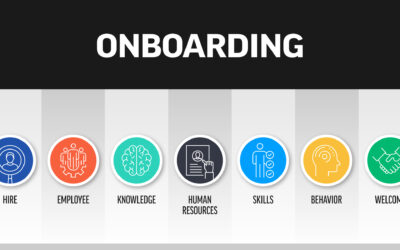In the AppleTV+ show Severance, employees are split—their personal selves literally are left at the door when they swipe in for work. As they get to their desks, employees transition into their work selves, leaving the burdens of their personal lives at the door. In real life, successful employers address their employees as whole people. Every generation in the workplace has its different stresses and it is naïve to think they do not spill into the workplace.
Employers who want to have an engaging workplace, attract and retain top talent, and reduce workforce burnout must evolve with the needs and wants of their workforce. Gone are the days when an employer can focus only on reducing workplace stress to address burnout. Looking at the employee as a whole person is much more successful in creating a loyal, engaged workforce and reducing burnout in the workplace.
Agency owners need to offer a full suite of benefits catered to a multigenerational workforce that fits with their budget. Benefit costs can range from minimal to higher costs for the employer, but it is vital to keep in mind that the cost of recruiting, hiring, and training a new employee is significantly higher than retaining an employee—not to mention the institutional knowledge that is lost and potential loss of clients when an employee leaves.
Recent studies have shown that these uncertain economic times have led to two trends:
First, a study by Care.com found almost half of U.S. employers were considering reducing their employee benefits. This is a slippery slope likely resulting in employee departures that ultimately increase costs.
Second, employee burnout is having a major impact in the workplace. Research by Eagle Hill Consulting found that almost half of U.S. workers say they are burned out. Why? It is not just work. While workload and feeling understaffed are on the list, they reported that work-life balance was one of the top causes.
Every generation makes a major impact on the workforce, and today’s younger generations are no exception. Millennials and Gen Zers are demanding better work-life balance and holding employers accountable making what were once options, expectations. This is evident not only in benefit offerings but also with significant employment legislation changes.
So, how can employers calibrate their benefit offerings to address the needs of the current workforce, reduce burnout and attract/retain top talent?
Financial fitness
Economic uncertainty, inflation, and stark cost of living increases around the country, combined with student loan debt, mortgage debt, rising taxes and the like are putting significant pressure on employees. Employers can offer financial fitness benefits like:
- Student loan debt repayment, in which the employer matches or contributes to the repayment, is a gold standard benefit.
- Tuition reimbursement and 529 College Savings Plans help the multigenerational workforce achieve their personal and familial goals.
- Retirement savings plans and 401(k)s are an expectation of today’s workforce, and sometimes required by law. Employer contributions to retirement plans show employer commitment to the workforce. [EDITOR’S NOTE: If you don’t offer your employees a 401(k) plan, or you are looking for a better plan, consider the PIA 401(k) Plan. For more information, visit www.tagcobrand.com/pia.]
- Profit sharing and stock-option plans not only help employees buy-in, but they help them build long-term wealth.
- Financial wellness coaching is increasingly popular, as are hosting lunch-and-learns regarding personal finance and discounted access to financial planning services.
- Financial assistance with other work-life programs (discussed later in this article), discounts or reimbursement for tax preparation services and cell phone or internet expenses (sometimes legally mandated) are peppering the field of financial benefits.
Health and wellness
Many U.S. employers are required by law to offer medical insurance to their employees. Many states have other required programs like workers’ compensation, short-term disability and paid family leave, which are funded through payroll taxes. Recent legislation has increased the footprint of these programs, reducing requirements for coverage, and increasing the number of eligible employees. Even though many state mandated leave programs are funded through payroll taxes, employers often incur hidden costs for temporary employees and for overtime to cover for the employee on leave.
Mental health coverage is in high demand, especially among members of the younger generations who are more likely to openly discuss their concerns and what they need to address mental health. Covering telehealth visits and mental health benefits goes a long way to supporting employees. Employee mental health is supported when the employer provides access to time off and creates an inclusive and diverse workplace. These also create a safe, engaging, and productive workplace.
Employee Assistance Programs are a great tool to stave off burnout, and often have a variety of experts to help with various concerns.
Employers who go further than these required offerings see better traction with their employees and a better return on investment. Supplemental health insurance options are popular and help an employer speak to a range of generations. Enhanced short-term disability, vision, dental (including orthodontics), hospitalization coverage and cancer disability insurance are attractive to employees at different seasons of their lives for different reasons.
Offering access to benefits experts, who can consult with employees to help them choose the best mix of benefits for their needs is another great way to help employees.
Wellness programs not only help improve the health and lifestyle of the workforce, but they also can have a multifaceted impact on the employer’s bottom line by increasing productivity, reducing unplanned absenteeism, and decreasing health care insurance cost.
While some companies may choose to add a meditation room, yoga studio, napping pod, or gyms to the office, and others may choose to lease space for these offerings, employers can choose a lower investment option also. Offering gym or health class reimbursements, meditation apps, insurance coverage, discounts or on-site access to chiropractors, acupuncturists, and masseuses can yield similar benefits.
Chef-catered lunches calibrated for different lifestyles or access to a nutritionist are excellent wellness benefits. Employees who avail themselves of these benefits often report more productivity and enthusiasm for work, and they also reduce the costs of an employer’s medical health coverage costs due to a healthier workforce.
Work and family
Work and family benefits are an important component of reducing burnout and increasing retention.
Paid family leave is an expectation for today’s workforce. Historically, it was limited to maternity leave. Now it is legally mandated in several states—including Connecticut, New Jersey and New York. Even when it is an employer-driven benefit, it applies to care for many family members, often including siblings’ and grandparents’ or grandchildren’s serious health conditions, or bonding with a child. As a result, many employers go further than the laws and offer paid parental leave and/or paid family leave to care for other family members.
Paid sick time off is impacted by legislation and employee need. Historically, employees might have a small number of sick days, particularly managers or exempt employees. Such time off was less accessible to nonexempt, part-time, and hourly employees. However, due to employers’ desire to retain talent, have a healthy workplace, and when applicable, comply with the law, many employers now offer paid sick time off for preventative care or illness for the employee, and to care for an affected family member.
Paid time off and floating holidays, especially vacation time—while not generally legally mandated—is one of the top benefits a prospective employee looks for when interviewing with a business. An agency that does not offer paid time off will have a difficult time recruiting and retaining its workforce. Employers are offering unlimited time off. Floating holidays help employees choose the holidays that are important to them while helping the employer meet business needs.
Sabbaticals (both paid and unpaid) are having a comeback. Employees take a chunk of time off, (up to three months) to reset, pursue hobbies or travel, and return refreshed.
Volunteer days—whether agency organized or at the individual level—are a popular perk.
Workplace perks can have a big impact on both financial fitness, and work and family. To woo employees to campus, assistance or discounts for chores (e.g., dry cleaning, laundry, grocery shopping and even home cleaning services) are becoming more desired. Access to concierge-type services (e.g., travel specialists who can plan and book your next trip, or entertainment concierges that can get coveted event tickets) may pay for themselves by giving employees more time to focus on work, leisure activities and health. The latter two have been found to directly impact productivity and creativity in the workplace. Locating the office in a desirable area with access to a vibrant community can help get employees back to the office.
The pressures of caregiving are real for members of all generations. Many employers offer a Dependent Care FSA that allows employees to allocate pre-tax dollars. Businesses can offer discounts or partial reimbursements for child care, elder care, adult care, and even pet care. Backup child or elder care, or allowing an employee flexible work hours is impactful.
Access to Medicare experts and estate planning services can help employees and caregivers plan for the future. EAPs and curated services help individuals find assisted living or nursing homes, and can reduce a large stressor.
Employers should view the vast world of benefit options as an important part of today’s employer-employee relationship. These benefits are not out of reach for any sized employer, and many of the benefits can be achieved at various levels of investment. A great broker or professional employer organization can increase access to these benefits for small- and mid-sized businesses around the country.
This article originally appeared in the July/August 2023 issue of PIA Magazine.

Vanessa Matsis-McCready
Vanessa Matsis-McCready directs the Engage PEO HR Consultant team, advises internal teams on a wide range of HR compliance matters, and works closely with Engage clients across industries to help them navigate employment law issues. Joining the Engage team in 2014, she supported Engage clients—primarily in the Northeast—on a variety of complex HR and employment issues. Prior to joining Engage, Matsis-McCready was an employee relations manager at a unionized public utility where she managed employee and labor relations issues for more than 500 employees. She also previously handled HR compliance issues for Time Inc.; was an associate at the law firm Kaye Scholer LLP; and served as a law clerk at Kane Kessler P.C., where she supported the Labor and Employment group with a focus on unionized hospitality clients.






